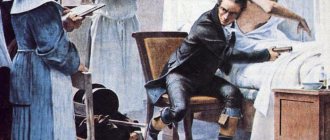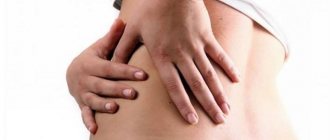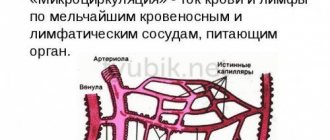Children often complain of chest pain, but it is rarely associated with heart disease or gastrointestinal tract inflammation or inflammation of the osteochondral joints. More often, chest pain in a child appears after physical activity and sports training, it is associated with muscle tension, sometimes due to psycho-emotional stress at home or at school, and is associated with the child’s internal anxiety.
If your child constantly complains of chest discomfort or pain for no apparent reason, consult a pediatrician to rule out serious diseases (heart, lungs, stomach, etc.).
URGENT CARE
Call an ambulance if your child:
- elevated temperature
- lethargy
- chest pain
- cough
- dry cough
- sudden shortness of breath appeared
- severe chest pain (suspicious pneumothorax)
THE DOCTOR'S CONSULTATION
Contact your doctor if your child complains of palpitations and difficulty breathing or persistent or very severe chest pain at rest.
ATTENTION!
If your child has persistent chest pain or gets worse with exercise, you should see a doctor. If chest pain appears after an injury, it is necessary to exclude a hip fracture, pneumothorax (collapsed lung), and other injuries to internal organs.
| ASK YOURSELF A QUESTION | POSSIBLE REASON | WHAT TO DO |
| Is the child physically active, plays sports, grows and develops normally, has a good appetite, is breathing normal? | Costochondritis (inflammation of the osteochondral joints of the ribs), muscle strain | If there is no improvement within 2-3 days, contact your pediatrician . Limit physical activity for a couple of days. |
| The child is healthy, he has difficulties with school and relationships with peers are tense, the atmosphere in the house is tense, chest pain appears at rest, lasts 1-2 minutes? | Nonspecific chest pain | Consult with your pediatrician ; a delicate and skillful approach will help identify psychological causes of pain and exclude organic causes of the disease. |
| The child suffered a viral infection, his temperature rose, and he developed a cough and weakness, increased breathing and wheezing | Pneumonia | It is necessary to call a pediatrician to choose treatment tactics |
| The child complains of a sour taste in the mouth and a burning sensation, grows and develops according to age, sometimes vomits, sometimes wakes up at night with pain in the chest or upper abdomen? | Diseases of the gastrointestinal tract | Raise the head of the bed to prevent acidic contents from the stomach from entering the esophagus. Avoid foods that cause heartburn (coffee, chocolate, tomatoes, etc.) Contact your pediatrician for an examination and examination. |
| Does your child have chest pain after physical activity, dizziness and blurred vision? Are there complaints of increased heart rate at rest, is the child pale or turns blue after physical activity? | Heart diseases | It is necessary to call a pediatrician to determine the causes |
| Is there swelling of the joints and their pain, chest pain at rest? | Juvenile rheumatoid arthritis | An examination by a pediatrician is required to determine the causes and consultation with specialists. |
FOR INFORMATION
Pneumothorax as a cause of chest pain
Collapse of the lung (or part of it) - pneumothorax - causes acute chest pain and sudden onset of shortness of breath. Spontaneous (sudden, without apparent cause) pneumothorax occurs in children, although it is most common in men 20-40 years old. Children with chronic lung diseases (for example, cystic fibrosis) are most prone to this, but pneumothorax occurs in healthy children, more often in thin teenage boys. Spontaneous pneumothorax occurs when the lung tissue ruptures, allowing air to leak from the lung into the pleural space. If this "leakage" occurs slowly, the baby will experience chest pain without other symptoms. In this case, the gap, as a rule, closes on its own, and the free air is absorbed. Otherwise, a large accumulation of air in the pleural part can lead to compression of the lung or part of it; In this case, severe chest pain, dry cough, and sudden shortness of breath occur. The child needs to be provided with peace and fresh air. Immediate medical attention is required.
Types of tracheitis
There are several classifications of this disease:
- according to duration, tracheitis is divided into acute and chronic, the latter most often occurs with periods of exacerbation and remission;
- according to its etiology (reason), it can be infectious or non-infectious;
- Based on the nature of changes in the mucous membrane, they distinguish between catarrhal (when the surface layer of the mucous membrane becomes inflamed), hyperplastic (when the mucous membrane becomes inflamed and thickens) and atrophic tracheitis (when the mucous membrane becomes thinner and loses a significant number of cells capable of performing its functions).
The approach to its treatment depends on the type of disease.
Infection is the main cause of tracheitis
In most cases, tracheitis is infectious in nature. The cause of inflammation of the mucous membrane is viruses and bacteria; associations of different pathogens are possible, that is, the presence of both a viral and bacterial infection at the same time. During the ARVI season, tracheitis in a child occurs as a result of infection with influenza viruses and other types of viruses, the number of which is very large. Subsequently, the addition of a secondary bacterial infection (streptococcal, staphylococcal, etc.) is often noted.
Pediatric abdominal and chest injuries
Due to their hypermobility, curiosity, and carelessness, children are often injured. Parents need to monitor the behavior of their children, and those who are already leaving their care should be warned against the possibility of injury through constant conversations. In any case, after receiving an injury, the child must be examined by a doctor and decide whether hospitalization is necessary.
Classification of injuries
Injuries associated with the chest and abdomen are dangerous because in these cases the main vital organs of a person are injured - the heart, lungs, kidneys, spleen, liver, blood vessels, etc. It is not always possible to determine the severity of the incident by appearance, since along with open injuries there are also closed ones. They are divided into these two types.
The third type of injury includes soft tissue damage. They are the least dangerous, as they are expressed in the form of wounds, bruises and hematomas, and they are always visible upon visual inspection. After such injuries, the child’s body recovers in 4-5 days. Although superficial injuries are considered minor injuries, attention to the child’s well-being cannot be reduced after this period, because sometimes they hide more serious injuries associated with internal organs and bleeding. For the same reason, in no case should treatment be carried out with manual therapy, as this can only aggravate the condition.
A child can receive a closed injury as a result of a blow with a foot, hand, or a blunt object aimed at the abdomen and chest. It can also be a fall from a height or compression, for example, in a car accident, when he is pinned between the seats of a car.
Open injuries are characterized by the presence of bleeding, since these injuries occur after contact with piercing and cutting objects and as a consequence of a gunshot wound. Moreover, bleeding can be external, internal, or joint. In case of open injury, hemothorax, which is the penetration of blood into the pleural cavity, and pneumothorax, which is the entry of air into the same area, are very dangerous. In complicated cases they are present simultaneously.
Signs and symptoms of chest and abdominal injuries
The presence of pain is the main symptom. Its intensity depends on the degree of damage, and can be characterized as tolerable with minor injury. In critical cases, painful shock and loss of consciousness are noted.
In case of an injury localized in the abdominal area, the pain can be constant, unremitting in any position, and after a day even intensify, which indicates internal bleeding and damage to internal organs. The child complains of nausea, dizziness, and lack of air. He is tormented by thirst, vomiting, rapid pulse, and pale skin. When the stomach and intestines rupture, there is a risk of developing inflammation of the peritoneum - peritonitis.
In the case where the chest area is damaged, there is damage to the soft tissues; in addition to pain, there is a cough, whistling when inhaling, and difficulty breathing. The skin turns pale or blue, and with hemothorax, foaming blood is released from the wound. The resulting injuries in some cases are the result of mechanical injuries such as a fracture of the collarbone or rib.
The child’s condition is aggravated if there is simultaneous injury to the abdominal and chest areas. Therefore, it is so important, especially in such severe cases, to quickly deliver the child to a medical facility.
How to help your child before the doctors arrive
When a child receives an injury of any severity, it is important not to get confused and behave correctly. Not only the health, but sometimes the life of the child depends on how first aid is provided.
Taking care not to cause additional damage, you need to carefully remove the constricting clothing so that the child can breathe freely. To do this, remove the sweater and belt on the trousers, unbutton the blouse or shirt. If the child is conscious, then you need to sit him down and bend his knees. If you are unconscious, you should try to give him the same position, while turning your head to the side. Until doctors arrive, you need to monitor your breathing and pulse.
In cases where there is external bleeding, it is advisable to apply a sterile bandage. The same is done if pneumothorax is suspected. A bandage is applied to relieve pain when the collarbone or ribs are fractured.
And the most important thing is to be sure to hospitalize the child.
Author: K.M.N., Academician of the Russian Academy of Medical Sciences M.A. Bobyr
What else can cause tracheitis?
Tracheitis in a child can also be non-infectious in nature. Its appearance is sometimes provoked by foreign bodies in the respiratory tract and medical manipulations during anesthesia affecting the trachea. A common cause of tracheitis is the child inhaling icy or dry hot air, chemically active fumes (from household and industrial chemicals, reagents, paints and varnishes). Continued contact with irritating aggressive substances maintains chronic inflammation. Another possible cause of non-infectious tracheitis in a child is allergies. Inhalation of an allergen triggers a hypersensitivity reaction, which leads to swelling of the mucous membrane of the larynx, trachea and bronchi.
Diagnosis of rib pain
If you are suffering from rib pain, contact the CELT Pain Clinic. We employ doctors of various specialties who will use the entire arsenal of diagnostic and treatment capabilities of our multidisciplinary clinic to solve your problems. Since there are many reasons that cause pain in the ribs, it is very important to correctly diagnose. This is the only way to correctly diagnose and prescribe treatment.
If you experience pain, contact one of our specialists:
- therapist;
- neurologist;
- traumatologist;
- pulmonologist;
- cardiologist.
Diagnosis in our Pain Clinic, in addition to examination by a doctor and medical history, may include:
- laboratory research methods;
- cardiography;
- computed tomography;
- magnetic resonance imaging.
Predisposing factors
The development of tracheitis is promoted by:
- general hypothermia;
- decreased immunity;
- lack of vitamins;
- rickets in a child;
- impaired nasal breathing (with chronic runny nose, severe curvature of the nasal septum, adenoids);
- tendency to allergic reactions;
- long-term use of inhalers with glucocorticosteroids (hormonal anti-inflammatory drugs), which is sometimes necessary in the treatment of bronchial asthma;
- living in an area with unfavorable environmental conditions;
- presence of a smoker in the family.
All this does not cause clinically significant inflammation of the tracheal wall, but disrupts its barrier function and facilitates the penetration of pathogens.
Treatment methods for pubertal gynecomastia
After undergoing diagnostic tests and confirming the diagnosis, the endocrinologist will prescribe treatment based on the data obtained.
In most cases, serious treatment of the patient, especially surgery, is not required and when the hormonal system is stabilized, all indicators return to normal. But, if enlargement of the mammary glands in boys continues for a long period of time, then drug treatment or surgery is necessary.
Depending on the root cause of the problem, medications are prescribed. Most often, a teenager must take pills containing male sex hormones, or medications that suppress the secretion of estrogen.
For normal growth and development of the body during puberty, a child needs a sufficient amount of vitamins and minerals. They can be obtained either from food or in the form of special dietary supplements.
During the treatment of teenage gynecomastia, it is mandatory to take vitamin-mineral complexes, or a specialist may prescribe the intake of some individual elements that are in short supply in the patient’s body.
Which doctor should I contact?
I, Romanov Georgy Nikitich, endocrinologist, candidate of medical sciences. For more than two decades I have been helping people with various diseases. I gained my experience not only in our country, but also abroad, both in Russia and in some Western countries. I know modern methods of treating and diagnosing patients with endocrine diseases. For 3 years of work, I had more than one patient with pubertal gynecomastia, which we successfully treated.
Today I work in a clinic and also provide paid online consultations. To get an appointment with me, you need to make an appointment in one of the proposed messengers: Viber, Telegram, Instagram, WhatsApp, Skype, Vkontakte.
I will be glad to see you among my patients.
Symptoms of tracheitis
- Cough.
- Pain in the trachea (behind the sternum), discomfort when inhaling.
- Sleep disturbances in a child, which with tracheitis is associated with coughing attacks.
- Hoarse breathing.
- General weakness, loss of appetite.
- Increased body temperature - from subfebrile (37–37.5°C) to fever (38–39°C). But this is not a mandatory symptom of tracheitis and rather refers to signs of a primary infection.
Any of these manifestations is a reason to consult a doctor.
Dangerous complications
Against the background of constant pinching and inflammation of the spinal nerves, intercostal neuralgia develops. There is constant severe pain in the entire chest or on one side, which intensifies with movement, deep breathing and coughing. There is a sensation of skin numbness, burning or tingling.
Spinal diseases are also dangerous due to other complications: decreased and loss of mobility, paralysis, and disability. The same complications occur with advanced arthritis of the shoulder joint.
Features of cough with tracheitis
Cough is a key symptom of tracheitis in a child. It is intrusive, often annoying, painful, with a rough, deep sound tint. A cough with tracheitis in a child may be unproductive (dry) or accompanied by the release of viscous, light sputum. Its color depends on the nature and cause of the inflammatory process. With bacterial tracheitis, the sputum released during coughing is usually greenish, and with viral tracheitis, it is white-gray and scanty. Coughing attacks with tracheitis often appear in the early morning hours and immediately after waking up. This is explained by physiological stagnation of blood in the child and weakening of drainage (release of sputum) of the respiratory tract during prolonged lying down. Swelling and accumulating mucus provoke a coughing attack.
Which doctor should I contact for diagnosis?
The variety of causes makes diagnosis difficult, but in case of periodic or long-term disturbing pain, it is important to establish their true cause. Taking painkillers can only aggravate the situation, because chest pain is only a symptom, behind which there is some process that destroys the body.
Since there are many diseases, the best place to start is to consult a therapist. After listening to the complaints, he will prescribe preliminary tests: blood test, ECG, fluorography (x-ray), if necessary, CT scan of the chest, and refer you to specialists for a more detailed examination. You may need to do an ultrasound, gastroscopy, bronchoscopy, mammography (for women).
If you are worried about chest pain or other discomfort in the chest, come for a consultation at Anapa Medical. A team of specialists and modern equipment are the guarantee that the diagnosis will be made with maximum accuracy.
Treatment of tracheitis in children
Treatment of tracheitis in a child should be carried out under the supervision of a pediatrician. In severe cases, you may need the help of a pulmonologist - a doctor who treats diseases of the lungs and respiratory tract. Treatment of tracheitis includes medicinal and non-medicinal methods, the right combination of which can alleviate the child’s condition and cope with cough.
Medication methods
- To influence the infectious cause of the disease, antibacterial, antiviral or antifungal agents are prescribed. But with mild tracheitis, the doctor may decide to treat without the use of such drugs. In this case, the child will be under constant observation; if the condition worsens, the therapy will be adjusted.
- The main efforts in the treatment of tracheitis are aimed at relieving cough. For this, the child is prescribed mucolytics, which help thin and remove mucus. Antitussives for tracheitis are indicated in cases of debilitating cough. They are used strictly as prescribed by a doctor.
- When treating a child, cough remedies containing extracts of medicinal plants with mucolytic, expectorant and anti-inflammatory effects are also widely used. The components included in the composition complement and enhance each other's action. For example, Doctor MOM® cough syrup contains 10 carefully selected medicinal plant extracts. It helps to liquefy and remove mucus during tracheitis, and has an anti-inflammatory effect. Doctor MOM® cough syrup can be used to treat children from 3 years of age.
Non-drug methods
In addition to drug therapy for tracheitis, various physical procedures are used, a special massage to facilitate the discharge of sputum when coughing - all according to the doctor’s indications. It is important to remember that timely initiation of comprehensive treatment and compliance with the recommendations of a specialist is the key to successfully ridding a child of tracheitis. Self-medication of cough is fraught with the development of complications and a protracted course of the disease.
Treatment of chest pain
First of all, a diagnosis is carried out to identify the root cause of chest pain. If spinal pathology is detected, radiography or MRI examination is most often prescribed. If joints are affected, ultrasound and also MRI of the joint are prescribed. A joint puncture may be necessary.
Treatment includes taking medications that relieve pain, inflammation, muscle spasms, and restore pinched nerves. Physiotherapy and physical therapy are also prescribed, which improve blood circulation, metabolic processes, and strengthen the muscles of the back and chest.








